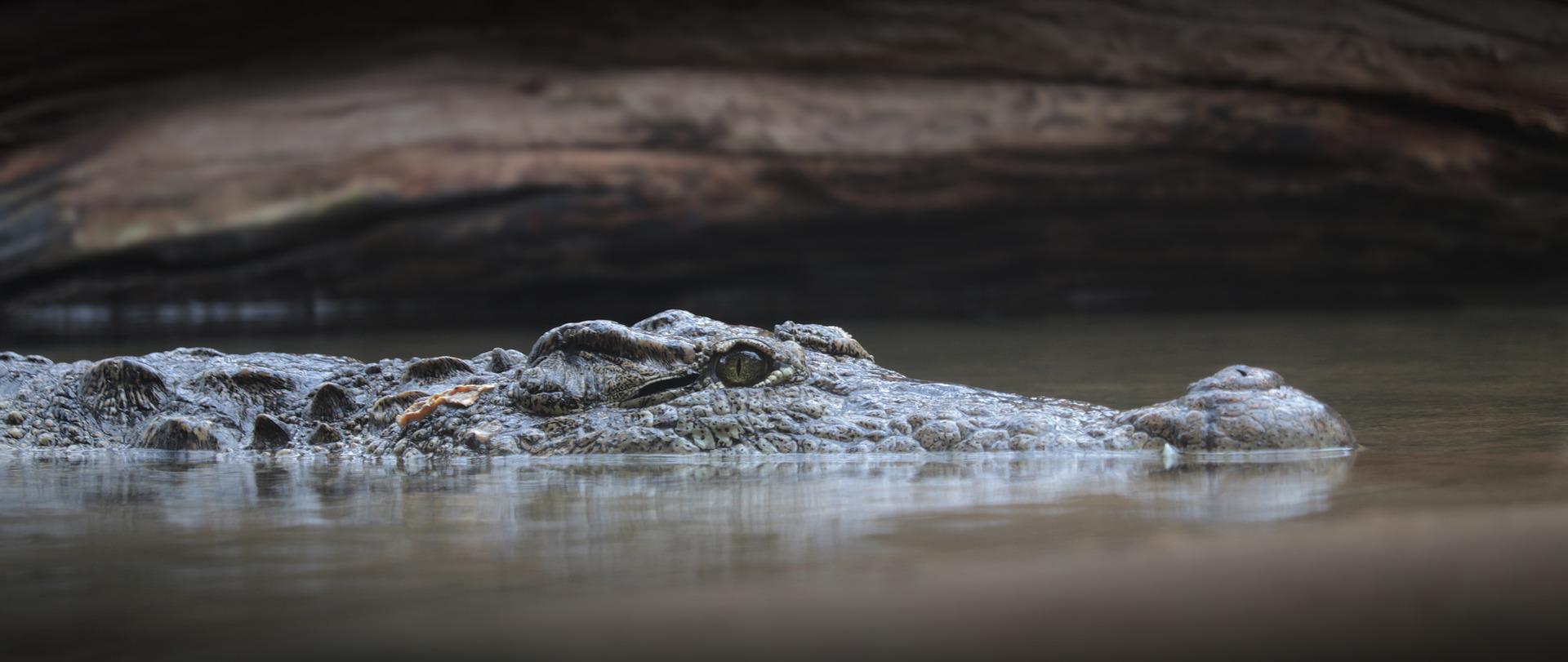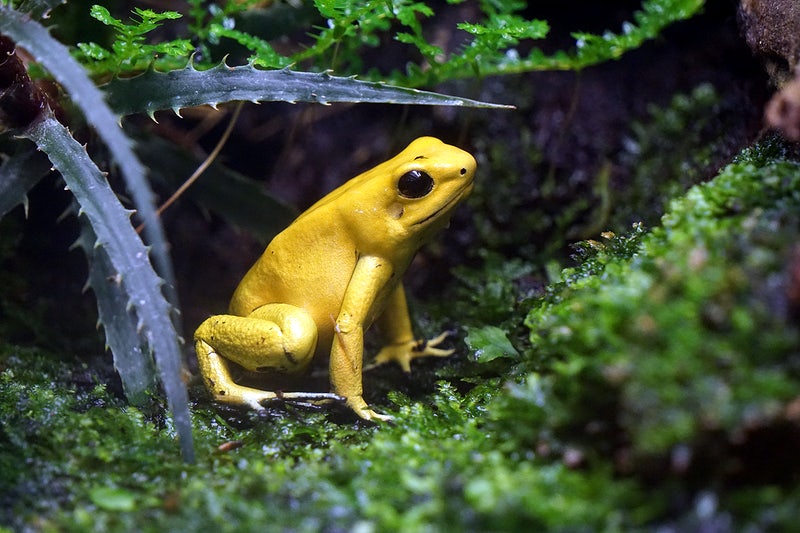
Turtles are among the most common pets in the world, and you’ll often see them in cartoons, comics, and riddles. Everybody knows turtles move slowly, have long lifespans, and have hard shells. However, when asked, “are turtles reptiles, or are they amphibians?”, people rarely know the answer.
You don’t have to worry because this guide has the answer you need! If you’re interested in learning all about the classification of turtles and other FAQs, then keep on reading!
Are turtles reptiles or amphibians?
This is a question that often confuses people. This is no surprise as most people think any animal that can live both on land and in water is an amphibian. However, a turtle isn’t an amphibian. All types of turtles are actually reptiles.
In the past, scientists used to classify reptiles together with amphibians. In the 13th century, scientists recognized any animal that lay eggs as a reptile. This meant snakes, lizards, and amphibians were all “reptiles”.
It wasn’t until the 19th century that scientists finally recognized how different reptiles and amphibians were. French zoologist Pierre André Latreille divided tetrapods, including reptiles and amphibians, into four separate classes. From then on, reptiles and amphibians had their own separate groups, just like birds and mammals.
What is a reptile?

To better understand how and why turtles are reptiles, it’s important to first define what a reptile is. When people think of reptiles, they usually only think of crocodiles or snakes. While crocodiles and snakes are certainly reptiles, they aren’t the only ones.
A reptile refers to animals that belong in the class Reptilia. There are around 11,700 species in this class, and these animals include crocodiles, snakes, lizards, tuataras, and turtles. This means reptiles can range from less than an inch long like a gecko to around 20 feet long like a saltwater crocodile.
All reptiles are tetrapods. This means they either have four limbs or evolved from ancestors who had four limbs.
What is an amphibian?

An amphibian refers to any animal belonging to the class Amphibia. Like reptiles, amphibians are tetrapods. These four-limbed creatures live in different parts of the world. They also live in different types of habitats, including both land and aquatic areas.
The word, “amphibian”, actually comes from the Ancient Greek word, “amphíbios”. Amphi means “both”, while bios means “life”. Together, the words literally translate to “both kinds of life”.
There are around 8,000 species of amphibians, which comprises mostly frogs. The smallest amphibian in the world is a frog around 0.30 in. long, while the largest amphibian is a salamander around 5 ft. 11 long.
What is a turtle?
A turtle refers to any animal that belongs to the order Testudines under the class Reptilia. The distinct feature of all turtles is their shell. A turtle’s shell acts as a shield for the turtle’s vital organs.
The shell of a turtle comprises sturdy material, namely the turtle’s bones. In fact, the shell develops from the turtle’s ribs and parts of its pelvis. This means a turtle’s shell connects to its skeleton, and as the turtle grows, so does its shell. Without its shell, a turtle is unlikely to survive.
There are 360 species of turtles in the world, and they can vary in appearance, habitat, and diet. Some turtles are as big as 5 ft. 10 in. long, while some are only 3 in. long. Some are omnivores, while some are strictly herbivores.
You can group turtles into two major groups: the side-necked turtles and the hidden-neck turtles. As their names suggest, these turtles differ based on how their heads retract into their shells.
With these definitions out of the way, we can better address the question, “are turtles reptiles?”
Why do people think turtles are amphibians?
Mostly what people know about turtles is also what they know about amphibians. While turtles and amphibians have several similarities, these characteristics do not mean they are not reptiles.
Why are turtles reptiles if they are vertebrates like amphibians?
You might think, “amphibians are also vertebrates, so why are turtles reptiles instead?” This is a fair assumption to make. However, vertebrates refer to all animals within the subphylum Vertebrata.
Animals in this group all have backbones, which means most animals are vertebrates, not just amphibians and reptiles. In fact, there are almost 70,000 species in this group. Aside from reptiles and amphibians, this includes mammals, birds, and fish.

Why are turtles reptiles if they are cold-blooded like amphibians?
All amphibians are cold-blooded or ectothermic. This means they can’t produce their body heat. They have to rely on external factors, such as the environment, to maintain their body temperature.
Like all amphibians, turtles are also cold-blooded. However, this doesn’t mean turtles are amphibians. All reptiles, except for one, are cold-blooded too. The tegu, a species of lizards from Central and South America, is the only known warm-blooded reptile.
Why are turtles reptiles if they are semi-aquatic like amphibians?
Contrary to popular belief, not all turtles can live on both land and water. Only terrapins and sea turtles can live in the water. Some turtles live only on land. These terrestrial turtles are called tortoises.
Tortoises are a species of turtles that live in various parts of the world. You can find them in the deserts, grasslands, and forests across Eurasia, Southeast Asia, and Africa.
Unlike other turtles, tortoises cannot swim. You’ll only find them near bodies of water if they are bathing or drinking. Some tortoises can float on water, and they can survive if they drift toward land. However, this doesn’t mean they are aquatic animals at all. Like humans, tortoises can sink and drown if they float in the water for too long.
Why are turtles reptiles if they lay eggs like amphibians?
Like amphibians, most reptiles do not give birth to live young, but lay eggs instead. This is as far as their similarities go, however, as turtle eggs differ from amphibian eggs.
Amphibians typically lay thousands of eggs per clutch. For instance, a common frog will typically lay between 3,000 to 6,000 eggs. Meanwhile, the number of eggs a turtle will lay depends on its species. In general, however, they lay much fewer eggs than amphibians. Some turtles lay as few as five eggs per clutch, while some turtles lay over 1,000 eggs per clutch.
Another difference between amphibian eggs and turtle eggs is their shell. Amphibian eggs, for instance, do not have a shell. Instead, amphibian eggs have a jellylike layer that protects the embryo from external forces. This layer is called the vitelline membrane.

On the other hand, turtle eggs can have a soft or hard shell. Some turtles have hard shells like a bird’s egg. Meanwhile, some turtles can have soft and leathery shells like a snake’s egg.
Lastly, turtles and amphibians lay their eggs in different habitats. Amphibians lay their eggs in water. Since their eggs do not have shells, amphibian shells can only survive in water. Otherwise, the eggs might dry out before they can hatch.
In contrast, turtles lay eggs on dry land. Even aquatic turtles such as sea turtles lay their eggs on beaches. To protect their eggs from predators, female turtles will often dig holes in the dirt. Once they lay their eggs in the hole, they cover it up once more to hide it from other animals.
Why are turtles reptiles?
With these similarities out of the way, it’s time to go over the distinct features of turtles that set them apart from amphibians.
Turtles only have lungs.
When someone asks you, “Are turtles reptiles?”, here’s one way to answer them: “Yes, turtles are reptiles because they only have lungs.”
As hatchlings, most amphibians have gills. As they mature, most amphibians develop lungs to breathe on land. Of course, this doesn’t mean adult amphibians can’t breathe underwater anymore. Some amphibians keep their gills, while some breathe through their skin. They absorb oxygen through the water on their skin. Because of this, most amphibians have to keep their skin moist at all times.
Meanwhile, turtles do not have gills. From hatching to adulthood, turtles only have lungs.
Turtles do not go through metamorphosis.
Like most amphibians, frogs first hatch from their eggs as tadpoles. At this stage, they are fully aquatic. They have gills and tails, and they can’t survive out of the water. After some time, the tadpole grows back legs. Then, it develops lungs, and it grows bigger until it becomes a frog. This process is called metamorphosis, and it usually takes around 12 to 16 weeks.
This process does not occur among turtles or other reptiles. Once a turtle hatches from its egg, it will not change its form. A hatchling already has lungs and a shell. While the shell might be soft, it will grow bigger and stronger as the baby turtle matures.

Turtles have scales.
If you still find it hard to believe that the answer to, “Are turtles reptiles?” is yes, then this next reason will convince you! Like other reptiles, turtles have scales.
A turtle’s shell has a layer of scales called “scutes”. Scutes cover the skin of crocodiles, the feet of birds, and the shells of turtles. They are made of keratin, which is the same material in people’s hair and nails.
The scutes have several functions. They provide a protective layer for the turtle, and they also prevent water loss. For sea turtles, their scales protect them from the water’s bacteria. The scales can also protect them from jellyfish stings.
Some amphibians, like toads, can have bumpy skin, but those are not actually scales. In fact, no amphibians have scales. Instead, those with rough skin only have raised glands that secrete toxins.
Turtles cannot secrete anything through their skin.
In the same way turtles can’t breathe through their skin, they can’t release anything through it either.
Turtle skin varies depending on the species. Some turtles have smooth or rough skin, and some can have green to black skin. However, like other reptiles, turtles do not have poison glands on their skin.
In contrast, most amphibians can secrete toxins from their skin. The poison helps them paralyze both predators and prey. Amphibians also secrete mucus to prevent their skin from drying out. Some amphibians, like Cranwell’s horned frog, even have skin that glows in the dark.

Are sea turtles reptiles?
Some people might wonder if sea turtles are the exception. However, this is not the case at all. Like other turtle species, sea turtles are reptiles. As marine turtles, they are well adapted to living underwater. They have powerful front slippers, so they are expert swimmers.
Despite this, all seven species of sea turtles still belong to the class Reptilia. Unlike amphibians, sea turtles do not have permeable skin. They have scales and a hard shell, and they resurface to lay eggs on damp beaches.
There’s no denying that the answer to the question, “are turtles reptiles?” is yes. The next time someone asks you, you can confidently tell them that no, turtles are not amphibians. All turtles are reptiles through and through!
Was this page helpful?
Our commitment to delivering trustworthy and engaging content is at the heart of what we do. Each fact on our site is contributed by real users like you, bringing a wealth of diverse insights and information. To ensure the highest standards of accuracy and reliability, our dedicated editors meticulously review each submission. This process guarantees that the facts we share are not only fascinating but also credible. Trust in our commitment to quality and authenticity as you explore and learn with us.
